Thermography
Every person deserves to look at their health status rather than waiting for a disease process to be diagnosed. Waiting until after symptoms have manifested is often too late to reverse the outcome.
The Professionals at Lisa’s Thermography and Wellness want to do something about this.
Instead of disease detection, we call Thermography “Health Discovery” – a very important part of your wellness program. Thermography see’s inflammation, which is oftentimes the very first spark of a potential health problem. Thermography can give you a look at the status of your health – in many cases long before you feel any symptoms or before a specific test is able to diagnose an actual disease. In a nutshell, thermography can see your body asking for extra help.
The good news is that Thermography can give you a warning;
the bad news is that you may not take it seriously enough to do something about it.
Proactive vs Reactive Healthcare: We humans are famous for waiting until symptoms become problematic before we finally act on them. At that point, it’s too late for prevention – reaction is our only choice. Many must endure invasive testing, drugs with side effects, treatments and/or surgeries that greatly reduce quality of life. However, on the proactive side – meaning preventing a disease process from taking hold – trained practitioners can support our body’s ability to heal itself through various modalities such as diet changes, supplementation, acupuncture, chiropractic, massage, exercise and more… all designed to return us to a healthy state of well-being. Lisa’s Thermography and Wellness supports this process by providing your practitioners with valuable information which may indicate possible health challenges. In addition, our Interpreting Physicians are MDs who believe in the power to monitor the treatment provided by your Health Practitioner. Monitoring your chosen treatments adds valuable data to the process and may help steer the course of treatment and monitor its effectiveness
Learn More:
Find Out If You Have Inflammation Before it Becomes a Major Problem
Although this information is of particular interest to you if you’re a woman, men will also find it extremely helpful.
There’s a new high-tech tool that specifically measures skin surface temperature which may indicate an inflammatory process.
It’s called thermal imaging, or thermography. In a nutshell, this tool creates a digital map of your body that illustrates heat patterns — patterns that may detect the inflammation connected to some condition or abnormality. It uses a scanning-type infrared camera that measures your body surface temperature, presenting the information as a digitized image.
These thermal images (called thermograms) are analyzed for abnormalities that may be signs of disease-causing inflammation in your body. Additionally, since your body is thermally symmetrical if normal, thermal asymmetries can indicate problems.
Thermograms provide:
- Precise and objective data from accurate measurements of thermal information…
- Considerable financial savings over conventional investigations…
- It must be stated that they are not stand alone screenings, they are an FDA cleared adjuct to mammography.
And unlike most diagnostic tests, thermal imaging is:
- Not painful…
- Non-invasive…
- Quick – your multi-image exams usually takes less than 30 minutes…
Plus, it:
- Makes no contact with your body — with no body part compression (such as what you experience with mammograms)
- Emits absolutely NO radiation
- Remember, it is not a replacement for a mammogram!
So that leads you to wonder…


How Can Thermography Really Help Me?
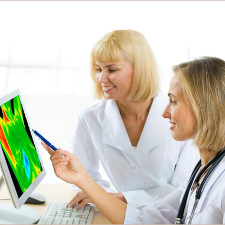
If you’re wondering how this new system will specifically help you better achieve your health goals, let me reassure you:
There are a number of areas in which thermography will help you better understand your body. But it specializes in:
- Breast Imaging
- Pain Diagnostics
- Finding inflammatory patterns for further clinical correlation.
Yes, it’s true. Thermograms provide you with information and treatment assistance in such conditions as cellular changes that could potentially lead to diseases, inflammatory processes, neurological and vascular dysfunction, and musculoskeletal injury.
Blood Profusion
Medical Infrared Imaging is
Sometimes, if a specific organ is in distress, even mild distress, blood will be automatically
Thermography is not diagnostic for any specific disease, but it can alert the thermal observer to investigate further.
So patterns, whether they represent expected, warmer or cooler temperatures are valuable information to anyone who is knowledgeable about thermal physiology.
Injury
Thermography has great potential in sports medicine to prevent serious injury. Blood profusion, which is a functional response, even to minor injury can alert the athlete, trainer or physician to a
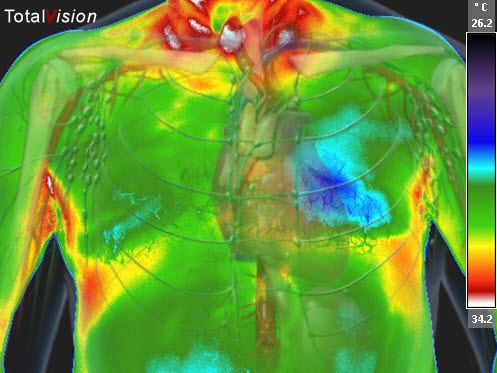
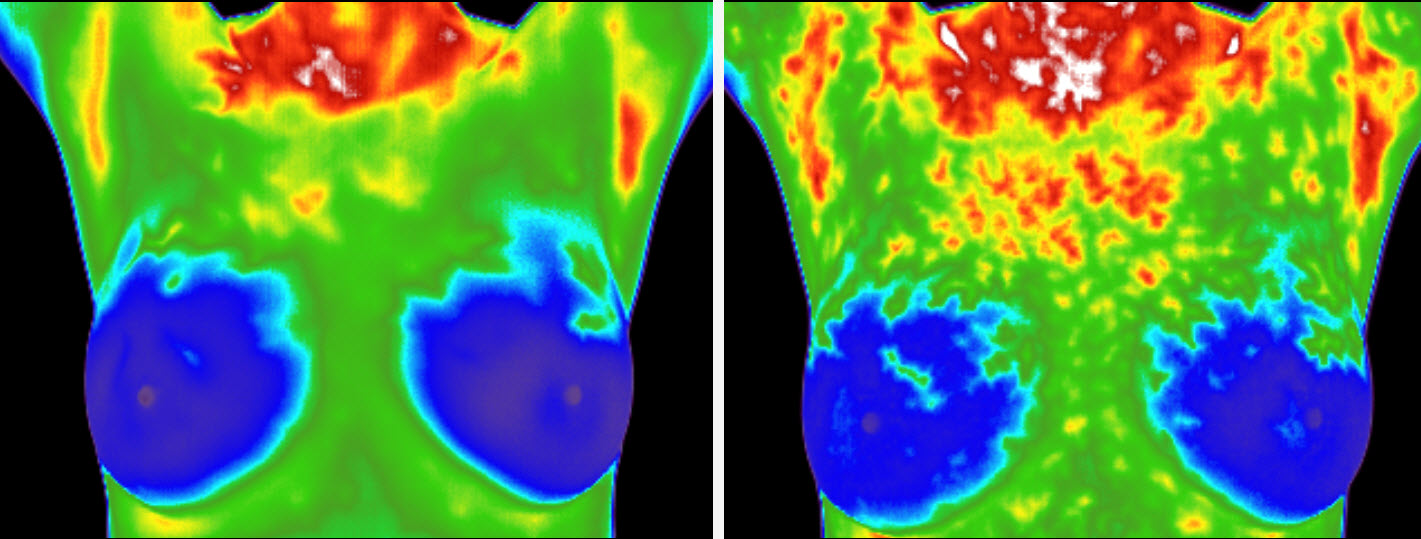
Metabolic Changes
The skin not only protects us from the outside world, but it is a functioning endocrine organ on its own! It produces all hormones and communicates with all organs and biologic processes in the body. How perfect that we are observing the skin and its response to hormonal and other endocrine processes. It is the body’s ultimate communication with the outside world, all there for us to observe with our infrared camera!
Conclusion
The more we use infrared imaging, the more we learn and discover! This is merely a brief overview, but we believe this should provide enough information for someone who is interested in living a long, healthy life, to consider
How Are Thermograms Different?
Mammograms look at anatomical changes in the breast, as they detect masses or lumps in the breast tissue. On the other hand, thermograms look at vascular changes in the breast, as they detect blood flow patterns, inflammation and asymmetries.
Thermograms can benefit all women. They may be particularly useful for young women who want to monitor their breast health before the recommended age of 40. Actually, your breast health should start as early as possible. You need to take your breast health seriously…
Proper breast self-exams, physician exams, and now thermography together provide you with a valuable tool for breast health.
The first session provides the baseline of your “thermal signature.” The second session, usually 3 to 6 months later is a comparative study to analyze any changes.
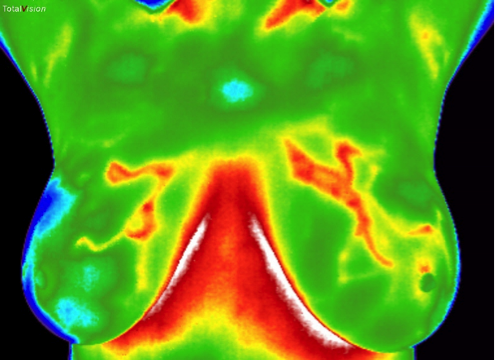
From there, annual thermograms allow you to map changes in your body’s heat patterns over time. They can alert you to any deviations from your norm. Mapping your health annually helps you detect changes, often before disease develops
It is important to state for legal purposes that Thermography is NOT a standalone device, does not replace a mammogram and should not be considered diagnostic.
Yet breast imaging is only one benefit of thermograms. Another area that can be of benefit to both sexes is pain analysis…
Thermography – The Only Method Available for “Visualizing” Your Pain

Whether your pain is acute or chronic, thermography can help provide answers to your pain issue.
In fact, thermography:
- Remains the only method available for visualizing your pain and pathology…
- Can assess pain and pathology anywhere in your body….
- Is very cost effective, risk free, and provides you with instant images…
- Fills in the gap in clinical diagnosis…
While x-rays, CT scans, ultrasound, and MRI scans are all tests of “anatomy” that measure structures of your body, thermography is unique in its ability to measure your physiological changes and metabolic processes.
What Else Can Thermography Help Detect in Your Body?
Thermography can assess heart function and may indicate inflammation in the carotid arteries (which may be a precursor to stroke and blood clots). When inflammation and/or occlusion of the carotid is visible, your doctor may do additional testing..
And here are some other examples:
- Arthritis: Thermography may help indicate early signs of arthritis — and differentiate between osteoarthritis and more severe forms like rheumatoid. Effective early treatment strategies can then be implemented, before you experience further degeneration.
- Neck and Back Pain: Thermal pain patterns ‘light up’ white and red hot on a scan in the involved area. You can get relief faster and begin restorative care that more precisely targets the correct area.
Dental Issues: If you have TMJ, gum disease, or an infected tooth, this will show up on a thermal scan as white or red hot. - Sinus Issues & Headaches: Significant heat in your forehead or sinus region revealed on a thermal scan may be an indicator that these systems in your body are not functioning properly.
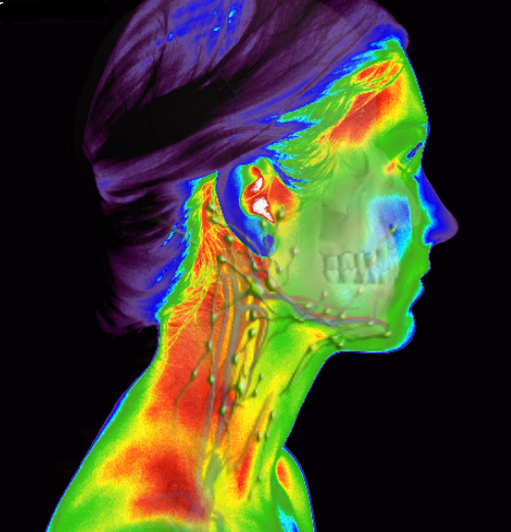
- Immune Dysfunction, Fibromyalgia and Chronic Fatigue: The immune system correlates to the T1 andT2 areas of your spine — high levels of heat in that region may indicate immune dysfunction. On the other hand, chronic fatigue, fibromyalgia, and aching joints are just a few complaints that correlate to cool patterns seen at this area.
- Carpal Tunnel Syndrome (CTS): This condition is often misdiagnosed. For instance, you may think you have CTS, yet the scan shows your neck is referring pain from a different affected area. This will help you get the most appropriate treatment.
- Digestive Disorders: Irritable bowel syndrome, diverticulitis and Crohn’s disease are often visible with thermography. If you’re able to address these conditions early on, you’ll find that health restoration is much more likely.
With all the great benefits of thermography, it may sound complicated — but it’s not!
What Happens When I Get a Thermogram?
Here are the simple steps you’ll follow when you get a Thermogram:
Step 1: You sit in a temperature-controlled room to allow your body to cool from any external conditions. At that time, you’ll complete some simple paperwork, including a health survey.
Step 2: You’re positioned in front of a Thermal Imaging Camera, and the technician takes digital pictures (5-15 minutes). You will be able to see yourself “live” on the computer screen, which can help give you a better understanding of your body.
Step 3: Your pictures are sent out to a certified physician for analysis of 1) the amount of heat and 2) the symmetry of the heat patterns. Heat patterns may indicate inflammation, infection, or a variance from your body’s norm.
Step 4: You’ll receive a report of findings shortly thereafter. This will help you and your doctor determine any next steps. We also provide recommendations for ways to reduce inflammation, if present, and provide personal health coaching programs if desired.
Step 5: We recommend you return for thermograms annually to monitor your health and watch for changes. Since everybody’s body is different, the best way to detect problems is to measure changes from your own body’s previous scans to establish a baseline.
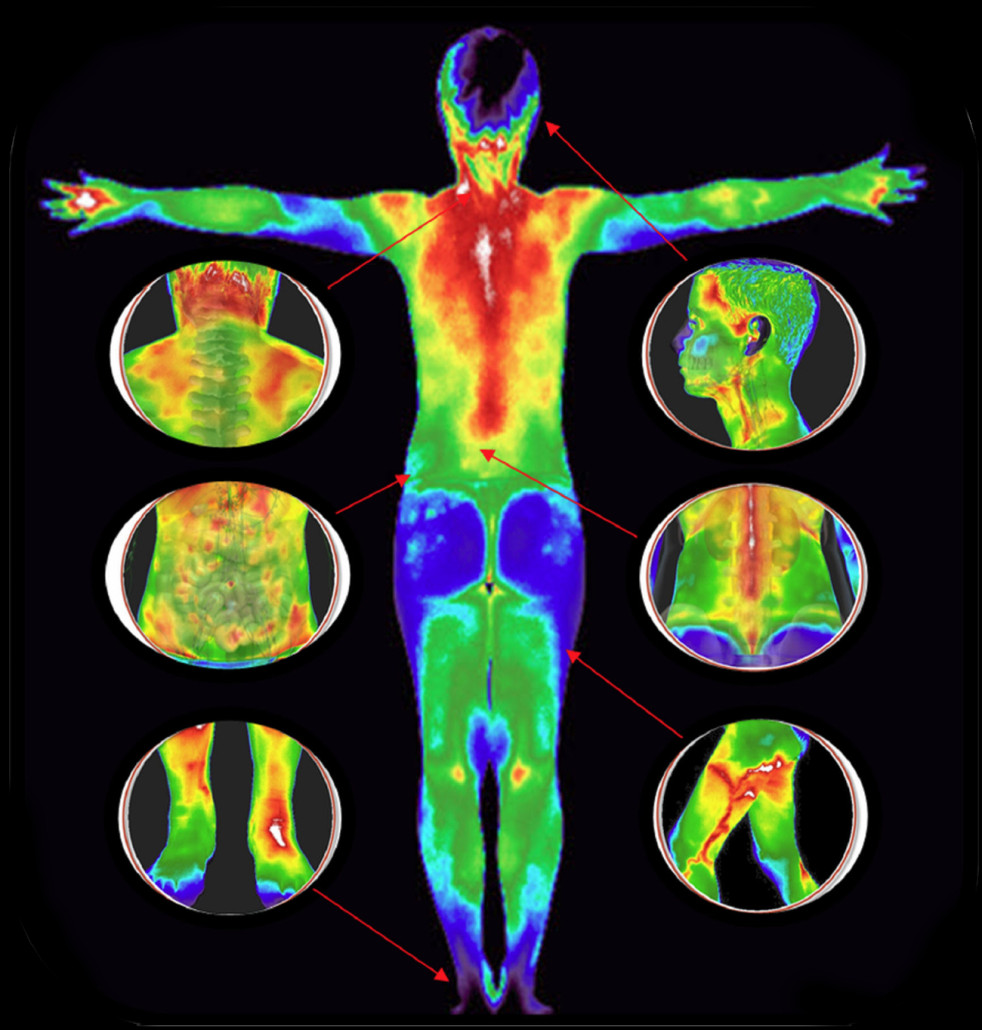
Not Just Some Experimental Tool
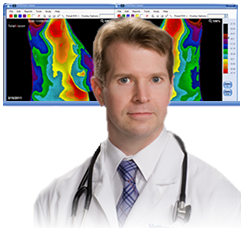
If you’ve never heard of thermography, you may wonder how credible it is. The equipment used is calibrated to measure to 100th of a degree centigrade. Thermographers are trained to exacting standards and must pass several tests plus keep current with continuing education. Your scans are actually analyzed and reviewed by certified medical doctors who’ve specialized in thermography. A detailed report plus your images are sent to you in 2 weeks. Suggestions for follow up and support or only a phone call away.
So you can rest assured this is a legitimate tool for helping you gain your best health possible.
“The value of thermography is not defined by an insurance company. But by what people are willing to pay for the truth.”
~ Carol Chandler, DOM, AP
